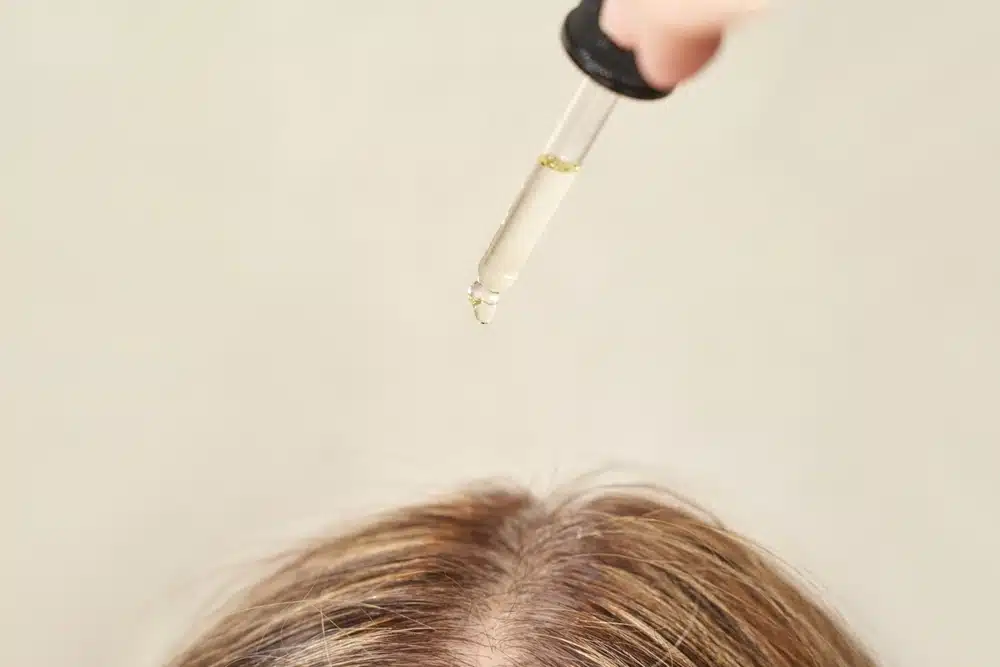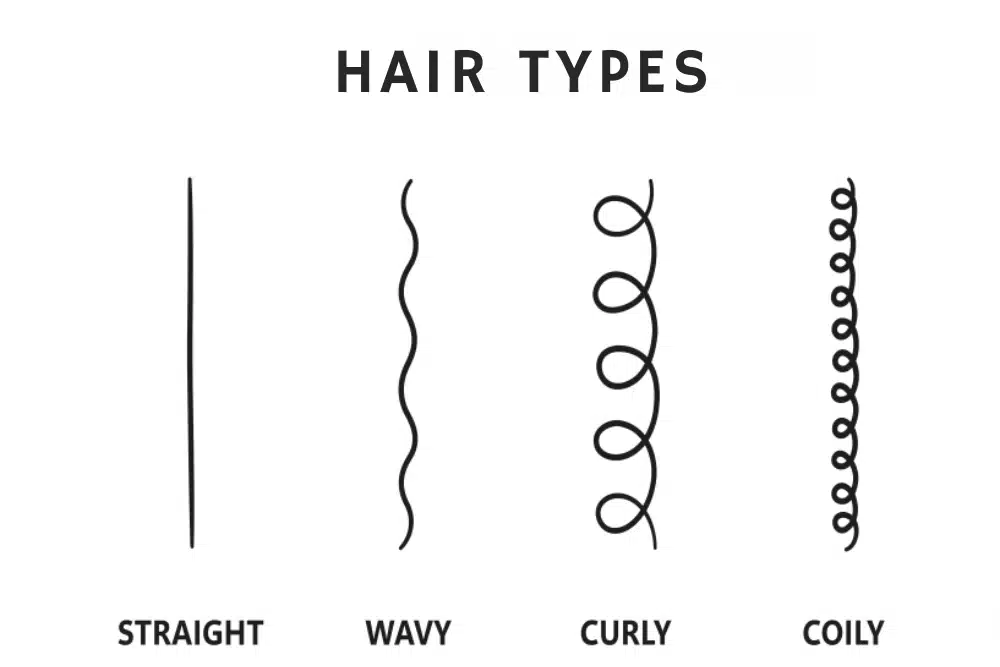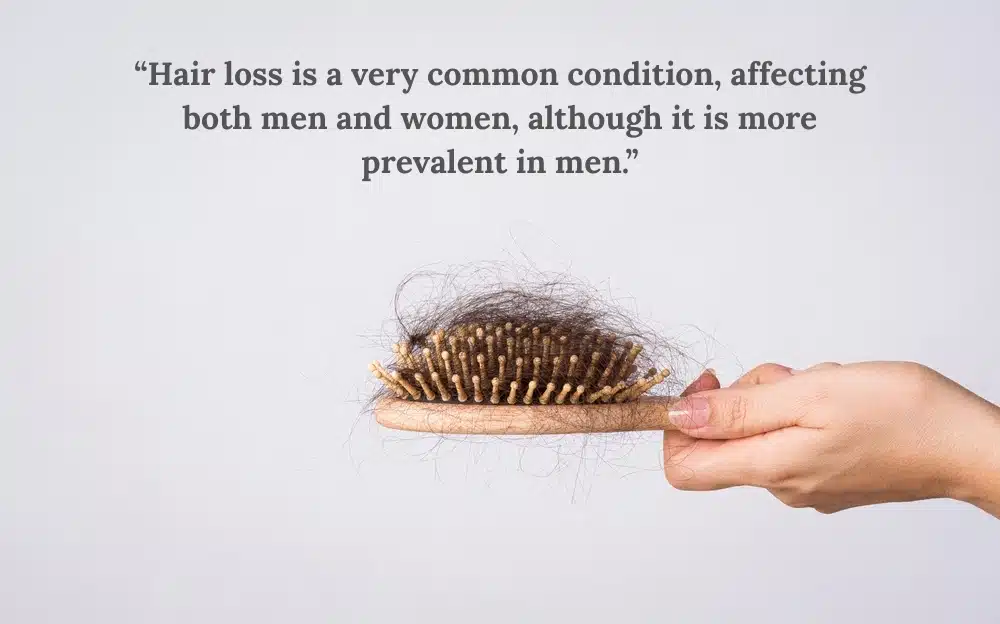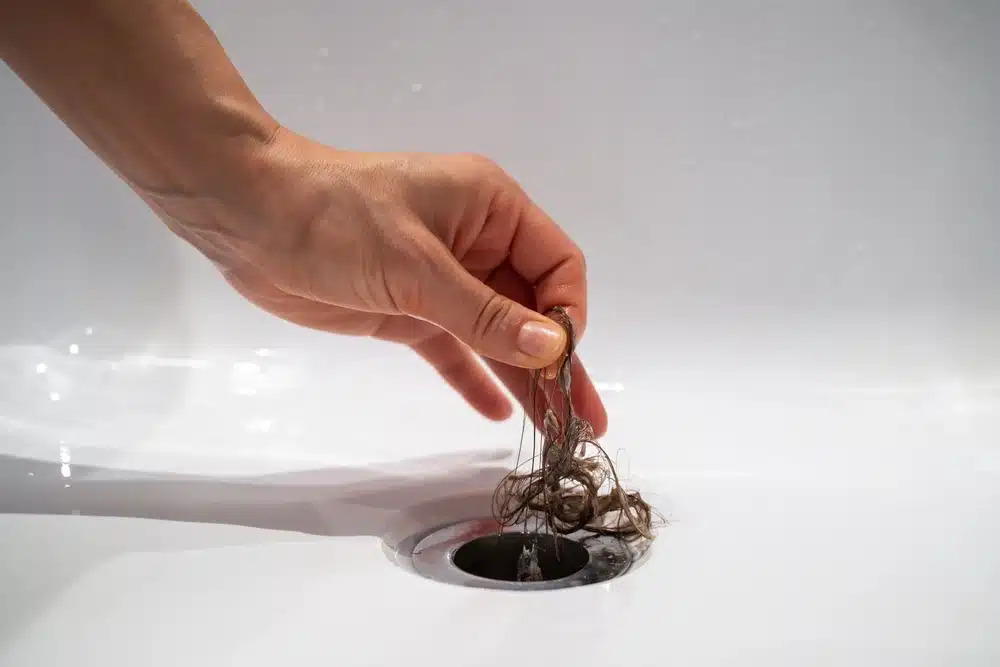When you look at different people’s hair, you will notice a lot of diversity in hair types. Some people have thick, curly hair, whereas others may have straight, fine hair. Of course, there is a lot of variety within hair types.
One characteristic of hair to notice is hair density. In this article, find out exactly what hair density is, including the different types, how to identify your own, and how to gain an increased hair density.
What is Hair Density?
Let’s start with a simple definition. Hair density refers to the number of hairs per square inch of scalp. Everybody has their own natural density – some people may have more hairs per square inch than others due to genetics. A high density of hairs often leads to thicker-looking hair, whereas a low density often results in thinner hair.
Types of Hair Density
There are three distinct types of hair density: low, medium, and high. Discover the meaning of each one here.
Low
This is the lowest number of hairs per square inch. With low-density hair, you might find there are quite large gaps between individual strands. It is also common for hair to show through, especially when wet or parting the scalp.
Medium
Medium density is common. It is a more balanced, even number of hair strands per square inch of scalp. The hair will cover the scalp just fine, even when parting.
High
High-density hair refers to the highest number of strands per square inch. It is hard to see the scalp, even if the hair is wet and parted. People with high-density hair tend to have very thick, full, and voluminous hair. Sometimes, this can pose a bit more of a challenge when it comes to maintenance and styling.
How to Determine Your Hair Density
Knowing your hair density is important, as it allows you to create a hair care routine that best suits you. Luckily, there is a simple way to measure hair density, so you know which category you fall under.
The Ponytail Hair Density Test
Arguably, the easiest way to determine your hair density is by doing the ponytail test. All you need to do is pull your hair back into a ponytail (assuming you have long enough hair – if not, proceed to one of the other methods below) and then measure the circumference. Anything under 2 inches is classed as low-density hair, anything between 2-3 inches is medium-density, and anything over 3 inches is considered high-density hair.
Scalp Visibility Test
Another way is to do the scalp visibility test. For this one, simply part your hair at any section and notice how much of your scalp is visible. If you can easily see your scalp, it means you have a low hair density. If you can see the scalp but not a lot of it, that’s medium density. If you have a hard time seeing the scalp, you likely have high-density hair.
Hair Count Method
The last method to measure your hair density provides a very accurate answer, but it does require more time. To do this, you’ll need to count each individual hair strand in a square inch area of your scalp. Do this carefully, ensuring you do not count any of the hairs twice. It requires more effort, and you may need to use a tape measure for complete accuracy.
Treating Each Hair Density Types
After measuring your hair density, you may wonder what the best hair density treatment is. Different hair densities require unique hair care routines.
Treating Low-Density Hair: Low-density hair is often fine and slightly more fragile than another hair type. To manage it, use volumizing hair products to add body to the locks, nourish your scalp with oils (rosemary oil can help promote hair growth), and avoid harsh chemicals.
Treating Medium-Density Hair: For medium-density hair, focus on maintaining a healthy scalp and strands. Use more lightweight yet still volumizing products to give your hair some life without weighing it down.
Treating High-Density Hair: Treating high-density hair often requires heavier hair care products to prevent dry hair. Use products with a high moisture content to tame thick hair, and apply oils to add plenty of hydration. If your hair gets tangled or frizzy easily, a leave-in conditioner works well. It’s also helpful to wash your hair less frequently.
Increasing Hair Density: Top Tips
Most people dream of having thicker locks, so how might you go about increasing your hair density? Here are some top tips for doing so.
Eat Well
Eating well is key to maintaining a higher hair density, and can even lead to thicker, healthier hair over time. Ensure you include plenty of minerals, proteins, and vitamins in your diet, including foods such as fish, beans, nuts, seeds, and green vegetables.
Try Scalp Massages
Scalp massages are not only relaxing, but they can also stimulate blood flow to the scalp, providing the hair follicle with the nutrients they need to grow new, healthy hair. While a professional scalp massage is beneficial, you can also perform these massages on yourself in the comfort of your own home. Even better, use a hair oil while you do it.
Use Hair Oils
Some hair oils may be able to boost growth! Some of these oils include rosemary oil, sage oil, and tea tree oil. [1] While these usually aren’t an absolute cure for hair loss, they can lead to an increase in hair density when used regularly.
Try Clinical Procedures
There are several clinical procedures that can promote new hair growth. Some of these include PRP (platelet-rich plasma) therapy, microneedling, and low-level laser therapy. Receiving regular clinical treatments can make a significant difference in the thickness of your hair. Try using a hair track app to keep up with results.
Remember that hair density is often linked to genetics, so do not stress yourself out too much with trying to have medium or high density hair if your strands are naturally fine. There are ways to make your hair look healthy and full with products!
Other Types of Hair Characteristics
It is worth learning about the other hair types and characteristics. The more you know about the hair on your head, the better you can treat it.
Texture: Hair texture refers to the thickness (or width) of each individual hair strand. These hairs may be fine, medium, or coarse. Keep in mind this is different from hair density. Someone with both course strands and high-density hair would have very thick, voluminous hair.
Type: There are four main hair types: straight, wavy, curly, and coily. [2] Within those hair type categories, there are also sub-styles – for example, straight hair (type 1) has 1A, 1B, and 1C.
Porosity: Hair porosity refers to the ability of the strands to absorb and retain moisture, including oils and water. Higher porosity hair tends to be drier and frizzier, whereas lower porosity hair takes a very long time to dry.
Colour: One of the most obvious characteristics of hair is its colour. Natural shades (without hair dye) include red, blonde, black, and brown. Of course, with the prevalence of different hair dyes, people can achieve all sorts of hair colours, from blue to green to purple!
By getting to know your hair characteristics inside and out, you will find it easier to create a hair care routine that works best for you.
Are You Experiencing Hair Loss?
It is one thing to naturally have low-density hair that appears thin – it is another to experience hair loss. Hair loss is a very common condition, affecting both men and women, although it is more prevalent in men. The most common form of hair loss is androgenetic alopecia, which is often caused by genetic factors. However, there are many other potential causes, from hormonal imbalances to immune system disorders.
If you are experiencing hair thinning or loss, start by determining the cause. Scheduling an appointment with a doctor or hair specialist can help you identify the underlying issue. From there, look into the best hair loss treatment for you.
Hair Loss Treatments
Many people find success with hair loss medications, such as minoxidil and finasteride. Minoxidil is an over-the-counter medication that is applied directly to the scalp, while finasteride is a prescription-only medication that blocks the production of DHT.
For a permanent solution, individuals love the FUE hair transplant. It is a minimally invasive surgical procedure that utilizes your own hair follicles and implants them into a balding area, resulting in fuller hair coverage.
In Summary
Hair density refers to the number of individual hair strands per square inch of the scalp. By knowing your hair density, you can determine the best hair care routine and products for your specific needs. Additionally, you’ll be able to monitor your hair density and notice any changes, such as hair loss. That way, you can reduce hair loss by intervening sooner rather than later.
If you have already experienced hair loss and want to learn more about long-term solutions, head to our patients gallery.
Sources:
- https://www.healthline.com/health/essential-oils-for-hair-growth#sage
- https://www.medicalnewstoday.com/articles/hair-types





